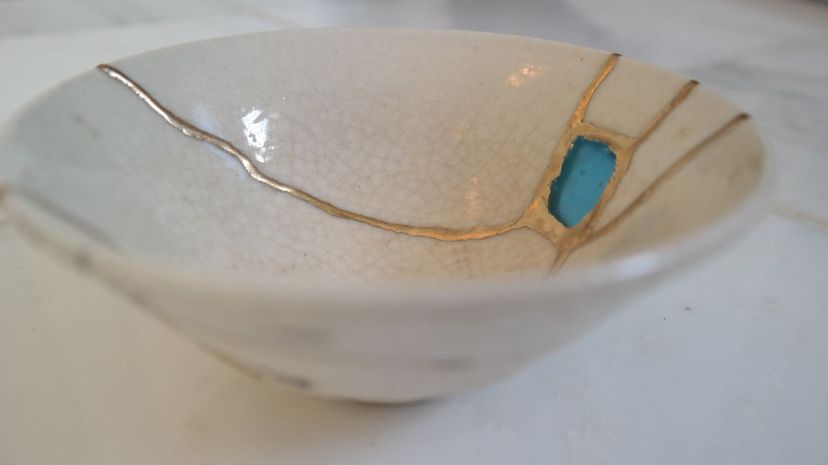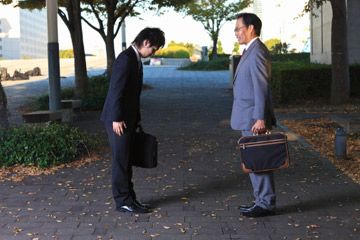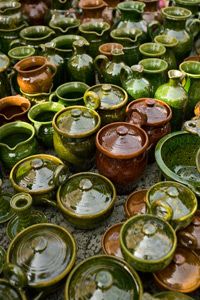
When something is broken, it's normally considered "damaged goods," a lost cause or otherwise beyond hope. But that's not so in Japanese society.
The 15th-century art of kintsugi, which translated means "golden joinery," reclaims the beauty of a damaged object.
Advertisement
It all began when the Japanese tea ceremony, Chanoyu, became popular. Legend holds that a Japanese shogun so wanted his broken Chinese tea bowl repaired that he sent it to China to be fixed. He was dismayed at the metal stitches used to piece it back together and asked local craftsmen to mend it. The result was a stunning new piece that emerged from the fragments, with golden seams tracing the places where the bowl had cracked.
The art form uses lacquer, mixed with a precious metal like gold, platinum or silver, to literally fill in the cracks of a broken ceramic or pottery piece. Unlike many other methods of repair, kintsugi doesn't try to hide the damaged areas. In fact, the glittering lacquer substance draws attention to the cracks.
Morty Bachar and Patty Storms of Lakeside Pottery describe kintsugi on their website as giving "new life to damaged or aging ceramic objects by celebrating their frailty and history. One can consider how we might live a kintsugi life, or 'rebirth' finding value in the cracks, missing pieces and chips – bringing to light the scars that have come from life experiences, finding new purpose through aging and loss, seeing the beauty of imperfection and loving ourselves, family and friends despite flaws."
"Broken," the latest episode from The Stuff of Life podcast, looks at this idea of brokenness in our world, from a personal and political perspective, and how, ultimately, we can gain strength from it.
To learn more about the concept of kintsugi and the power of being broken, listen to The Stuff of Life at this link or just press play on the podcast embedded in this article.
Advertisement


